Guest post by Alysia Mann Carey.
This is my first blog post about my research journey with MAXQDA. Currently, I am in the process of writing an article about some of the fieldwork and analysis I have already done, using MAXQDA. The paper concentrates on interviews and participatory observations conducted with surviving family members of the Cabula massacre, where 13 unarmed Black boys and young men between the ages of 16 and 27 were killed by police on a small plot of land used as a soccer field by local youth.
Cover of Correio Newspaper: “Direct Action in memory of those killed by the military police in Cabula”
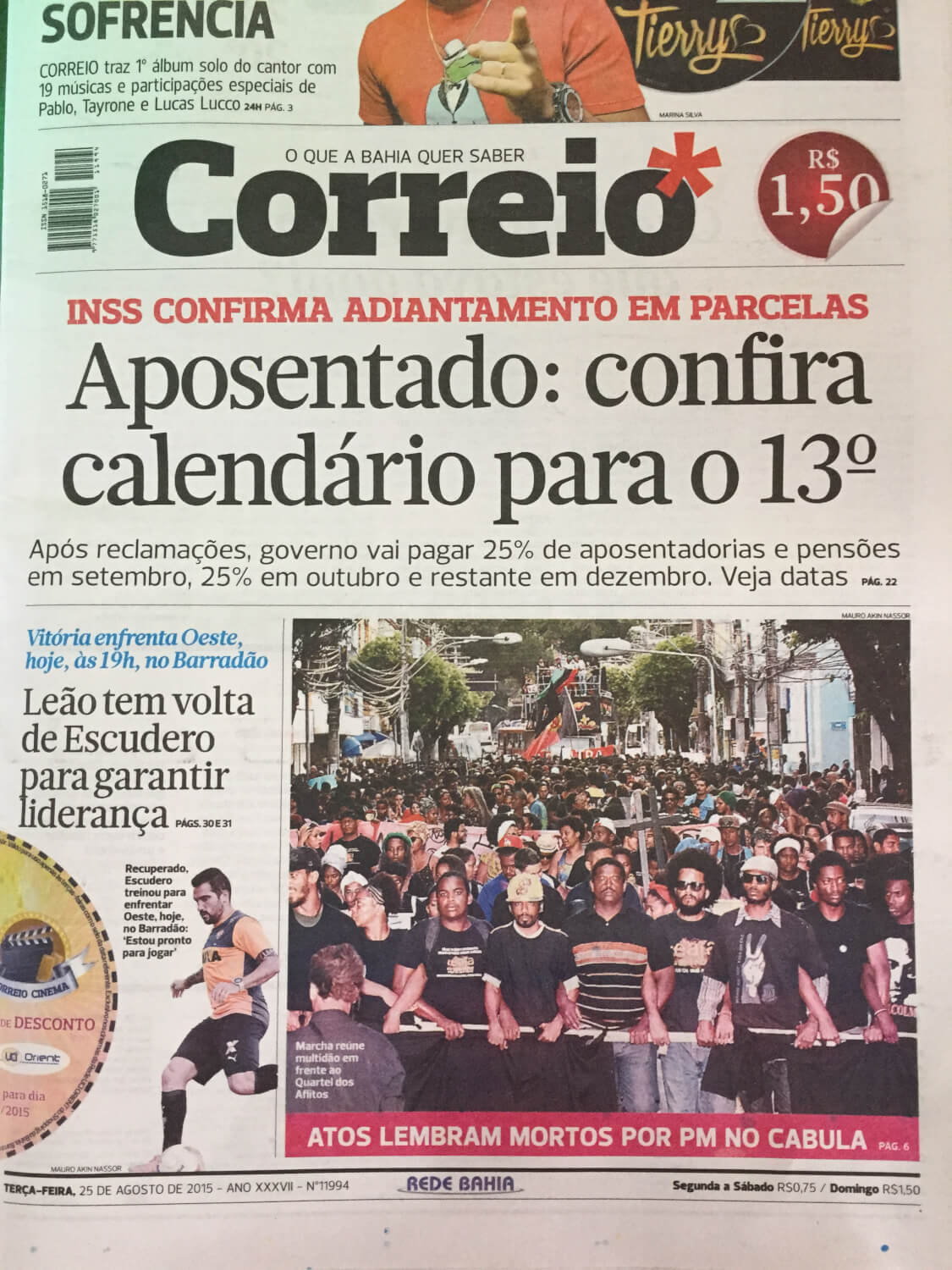
Understanding the effects of police violence on Black women and families in Brazil
This particular paper is part of my larger dissertation research, which takes a community-based, ethnographic approach to studying state violence against Afro-descendant women in Brazil and Colombia, and how women in these communities, in turn, are organizing and resisting state-sanctioned violence. I am using a framework of intimacy that is informed by Professor Beth Richie’s research as a way to understand Black women’s experiences with state violence, as well as their political thinking, action, and organizing. Richie defines intimacy in Arrested Justice: Black Women, Violence, and America’s Prison Nation, as “(a) historical or episodic feelings of intimacy, connectedness, or dependency, even if they are not current or reciprocal; (b) the social perception by outsiders that the individuals form some type of intimate unit, even if it is not a fully positive one; and (c) the routine access of the partners to each other’s physical and, to some extent, emotional space” (2012, 137). This first fieldwork diary entry discusses my initial coding and analysis of the interviews and the work being done by local activists from the React or Die! campaign and their families in, and outside of, Brazil.
Chabula Massacre Memorial Stone
(Salvador, Bahia, Brazil)
“In memory of our dead, we continue to live
and fight for Black people in the diaspora”
Transcribing Interviews
One of the first things I did with MAXQDA was import all of my audio, visual, and video files that I currently have to date. This included formal interviews, field notes, and video recordings from public hearings and protests that activists and family members were a part of. Five interviews had previously been transcribed, so my initial task was to transcribe the remaining six I had conducted during pre-dissertation research. It was “easier” for me to transcribe in Portuguese first, and later go back and paraphrase and code in English.
I think anyone who has transcribed interviews would agree that it is a long and arduous endeavor. But, MAXQDA’s Transcription Mode makes it more manageable. It helped tremendously to have an automated speaker change, particularly when I was transcribing a group interview with four women. In addition, memos helped me to make notes about future potential questions directly in MAXQDA, as well as note some follow up questions to ask when I return to Salvador.
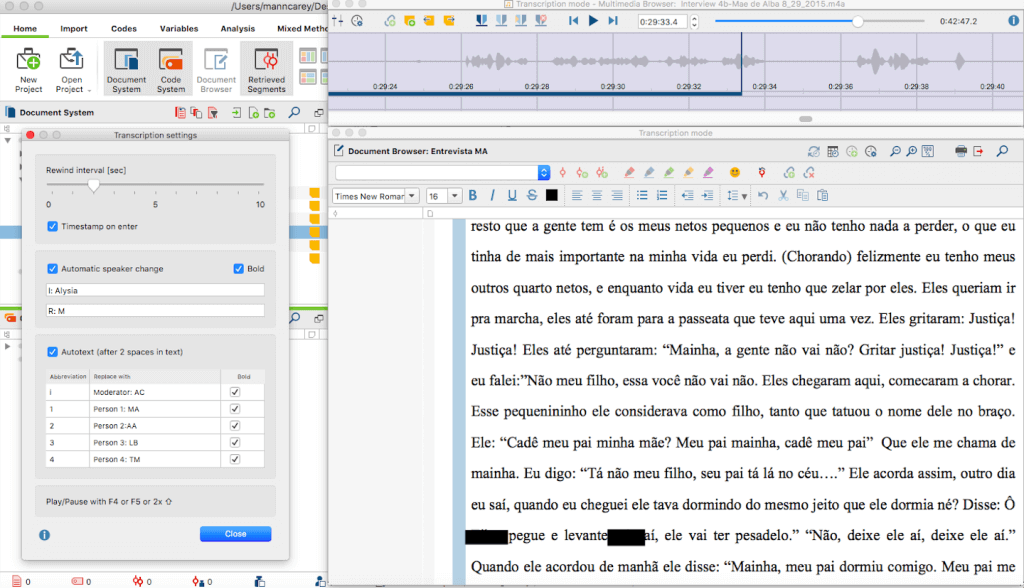
Transcribing interview data with MAXQDA 2018
Coding and memo writing with MAXQDA
During my first round of coding, I utilized holistic coding in order to achieve a basic sense of what each interview conveyed. Because I wanted the words, experiences, and work being done by family members and activists to drive the theory, I needed my codes and categories to be flexible. I first used the color-coding tool (yellow), just to signal important information. After coding the first interview, I wrote a methodological memo describing some broad categories that could encapsulate the effects of police violence—e.g. loss of weight, mothering, and care practices—as well as the spaces in which state violence occured—e.g. parks, the street, the home, as well as psychological consequences.
Once I had some initial categories, I then utilized MAXQDA’s in-vivo coding option, because it would allow me to highlight important terms/phrases in the transcripts and add them as new codes to the code system. This was a particularly useful tool, as it allowed me to begin to formulate a grounded theory from the stories and experiences of Black women/mother activists. From there, I used the drag-and-drop function to place the in-vivo codes under broader categories. Other categories that emerged from the coding process included “motherhood”, “the body”, “safety&security”, “justice”, “family”, “resistance”, “official story”, and “home”. It was through this process of coding and categorizing that the language of intimacy emerged when the mothers spoke about police violence.
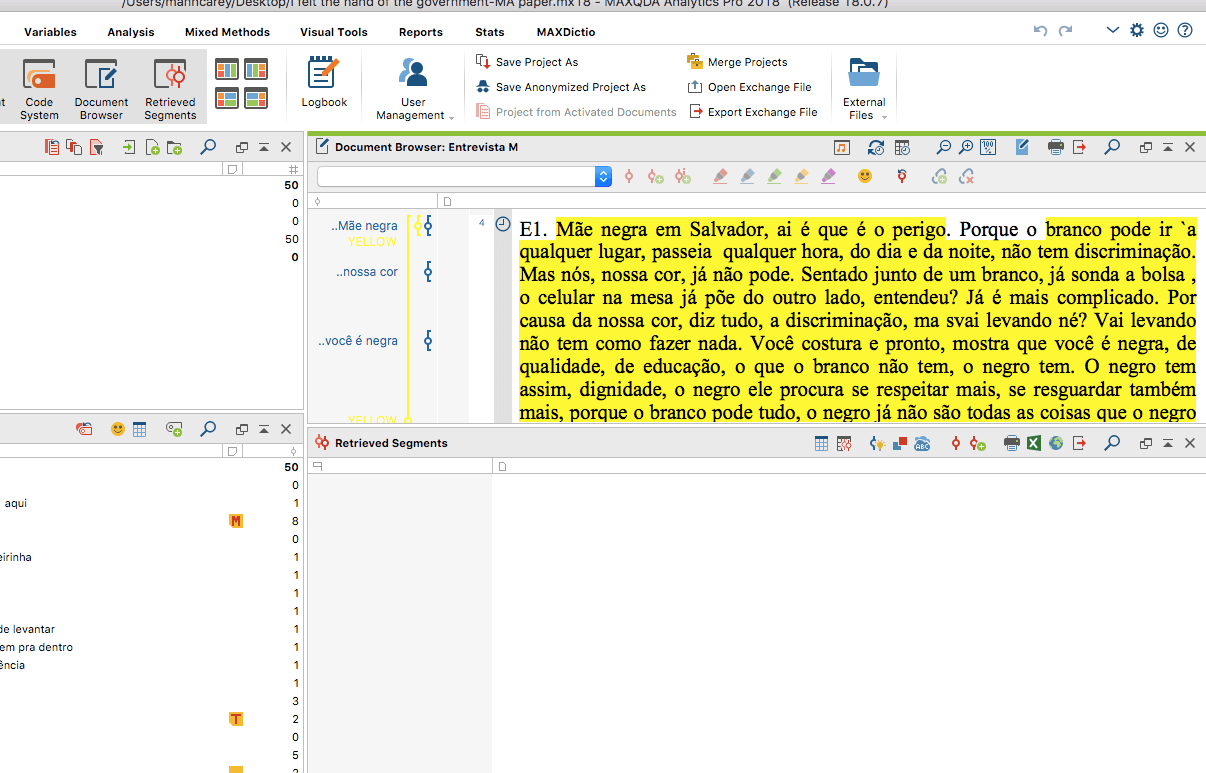
Grounded Theory analysis approach with MAXQDA’s In-vivo coding option
One of the categories I started with was “resistance”. It was a broad category that included different forms and levels of resistance. I did not realize it when I started, but I would come to find that I needed to break this category down further. I was able to keep resistance as an umbrella category, and the sub-codes then allowed me to highlight the particular forms of resistance that were occurring, and how they related to questions regarding family, community, domesticity, and embodiment.
Additionally, the memos have been especially important for me during this phase of coding because they have provided a space for reflection as well as a space to draw theoretical insights from the women activists I interviewed. Using MAXQDA’s memo function, I am also able to distinguish between theoretical, reflection, and methodological memos, which allows me to keep them visually distinct and easily discernable when I get to the analysis and writing phases.
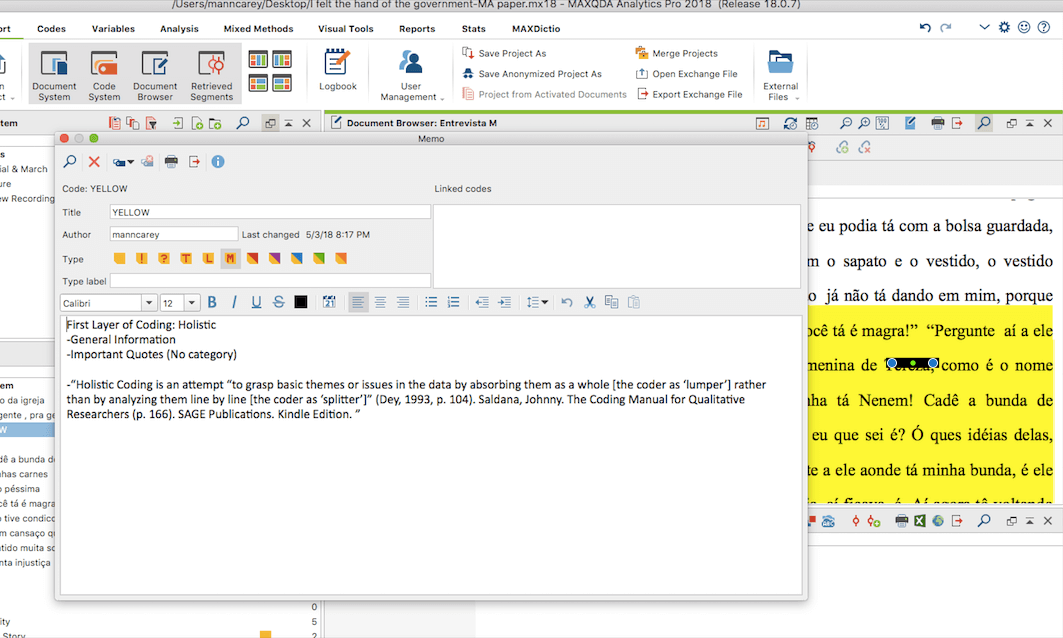
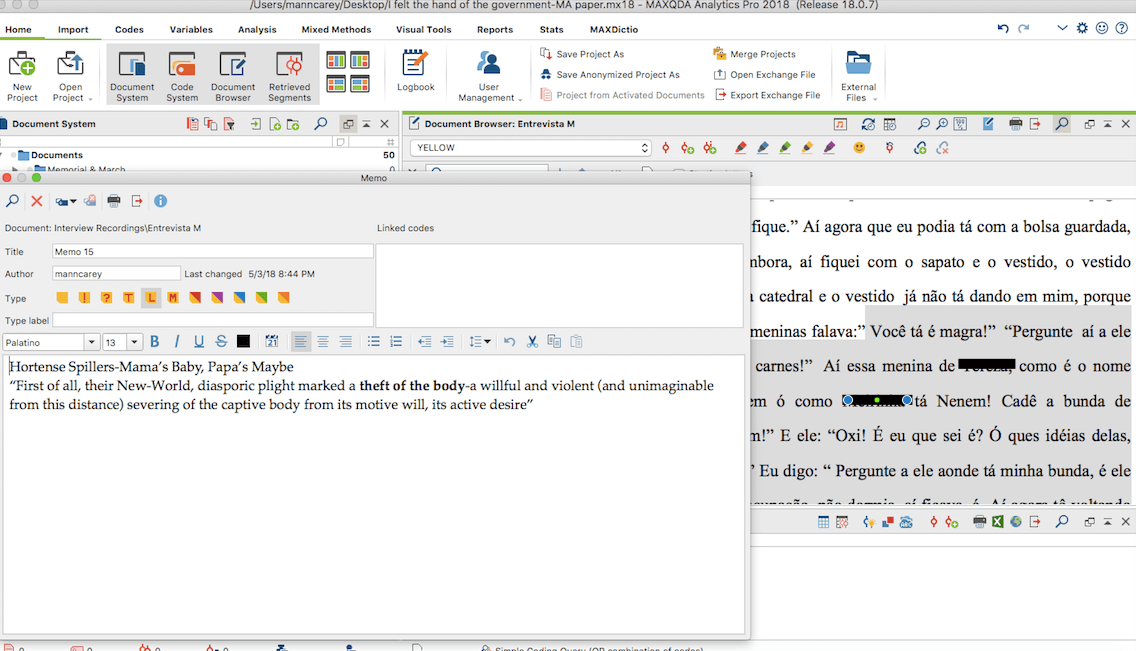
Creating methodological and literature memos in MAXQDA 2018 to draw theoretical insights
Reflections and next steps
Thus far, my fieldwork experience has been powerful—I have learned a lot from the activists/survivors I have interviewed and have been able to be a part of a global movement that is resisting police violence by centering Black women’s voices, experiences, and visions for a better world. Because my MAXQDA professional trainer is also my professor and mentor, our training sessions have not only been spaces to learn the specifics of the program, they have also been a space to experiment with different types of coding processes (e.g. in-vivo, process, concept). These have allowed me to get familiar with potential insights or themes that emerge with the different tools and resources that MAXQDA offers. While I may not use all of them at this point in my research journey, this experience helped me to get a clearer idea of the possible tools I can use to analyze a variety of indigenous wisdom of/with the activists. One of the features I plan to use more frequently is MAXQDA’s free memo function, which I will use to tease out my own overarching thoughts or theories on my project. As I will be away from my home institution, the free memo is something that I can share with my dissertation committee while I am away, so that they can get an idea of how my research design, fieldwork, and analysis are evolving in the field.
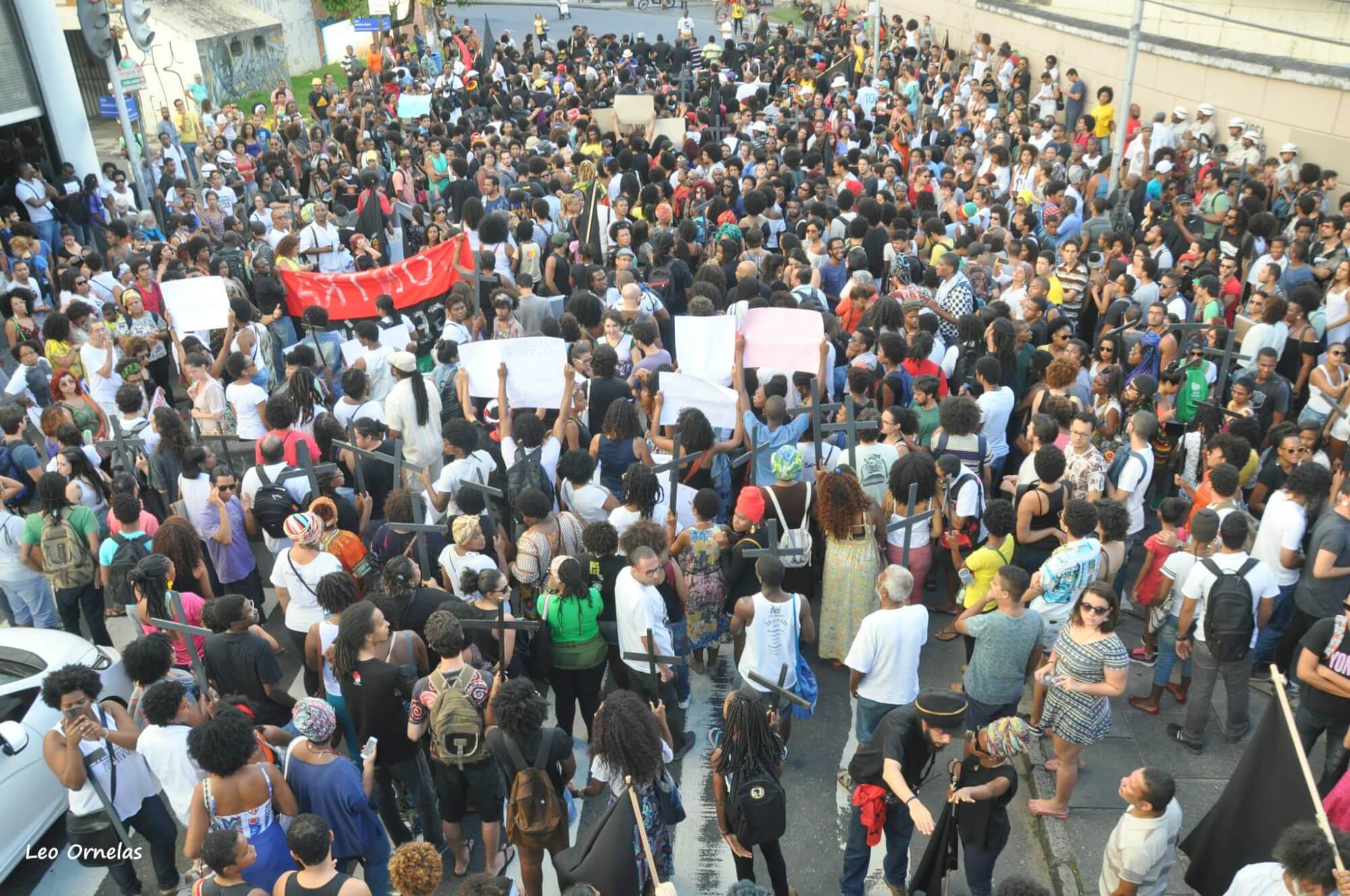
Aerial View of the Third Annual International March against the Genocide of Black People in front of the Military Police Headquarters (Salvador, Bahia, Brazil)
As I transition to the next phase of research, my next diary entries will focus on my return to Brazil and Colombia and my continuing work with the React or Die! Campaign (Brazil) and the Mobilization of Black Women for the Care of Life and Ancestral Territories (Colombia) over the next 18 months. I will utilize MAXQDA as a space to write and analyze my field notes, observations, and reflections on a number of issues, including my positionality, transnational alliances, convergences/divergences between Black movements from a hemispheric perspective, changes to my research design, as well as the challenges and triumphs that come with research.
Editor’s Note
Alysia Mann Carey is a recipient of MAXQDA’s #ResearchforChange Grant. She is a PhD student in Political Science at the University of Chicago, USA. Her dissertation titled, “I felt the hand of the government in my womb: Black women, state violence, and the transnational struggle for life in Brazil and Colombia” will take an ethnographic approach to the experiences of Afro-descendant women in two countries. She will return to the field at the end of May, 2018. Stay tuned for two more fieldwork diary entries by Alysia Mann Carey coming soon!




